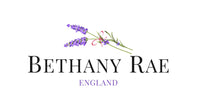A Bethany Rae Retrospective
Bethany Rae, a prominent name in the UK’s fashion landscape, has long been synonymous with quality cowhide products. From luxurious cowhide bags to elegant gilets, their range is a testament to the enduring appeal of cowhide. This blog explores how cowhide accessories have evolved over the decades, reflecting societal changes and fashion trends.
The Early 20th Century: Utility and Elegance
In the early 1900s, cowhide was primarily valued for its durability and practicality. Accessories like belts and rugged bags were common, reflecting a society focused on functionality. During this era, cowhide began to gain recognition for its unique texture and robustness, making it a favoured material among artisans.
The 1920s and 1930s: The Rise of Luxury
The Roaring Twenties brought a shift. People sought luxury in their fashion choices, and cowhide accessories evolved accordingly. Artisans began experimenting with different tanning techniques, giving rise to softer, more pliable cowhide. This era saw the introduction of cowhide in high-end fashion, with items like elegant purses and decorative rugs adorning the homes and wardrobes of the fashionable elite.
The 1940s and 1950s: A Practical Turn
World War II and the post-war years saw a return to practicality. Durability became crucial again, and cowhide products like sturdy duffle bags and belts were in high demand. However, the 1950s also saw a resurgence of interest in cowhide for fashion, with designers incorporating cowhide in more adventurous and stylish ways.
The Swinging Sixties: Cowhide in the Spotlight
The 1960s were a turning point. Fashion became a form of expression, and cowhide accessories were no exception. Brightly coloured cowhide bags, bold belts, and even cowhide clothing items like gilets became popular. This era marked the beginning of cowhide as a statement piece rather than just a material of utility.
The 1970s and 1980s: Diverse Expressions
The 1970s and 1980s were decades of diverse fashion trends, and cowhide adapted to each. The 70s favoured the natural, bohemian look, and cowhide was often used in its most natural form. The 80s, on the other hand, embraced extravagance. Bethany Rae's cowhide products from this era reflected these trends, with both minimalist and opulent designs.
The 1990s: Minimalism and Eco-consciousness
The 1990s saw a shift towards minimalism and an increasing awareness of sustainability. Cowhide, being a natural and long-lasting material, became popular for its lower environmental impact compared to synthetic alternatives. The designs from Bethany Rae in this era were sleek, with a focus on the natural beauty and texture of the hide.
The 2000s to Today: Modern Innovations and Timeless Appeal
In the 21st century, cowhide accessories continue to be a staple in fashion. Innovations in tanning and dyeing have allowed for a broader range of colours and finishes, making cowhide a versatile choice for modern designers. Bethany Rae’s current collection showcases this versatility, offering everything from classic, elegant purses to contemporary, edgy duffle bags.
Conclusion
Cowhide accessories have journeyed through the decades, mirroring societal changes and fashion trends. From its humble beginnings to its current status as a luxury material, cowhide has proven to be both adaptable and timeless. Bethany Rae, with its deep understanding of this material, continues to honour its legacy while pushing the boundaries of design and style.
As we look to the future, Bethany Rae remains committed to celebrating the unique beauty and versatility of cowhide, ensuring that these accessories remain not just a part of our history but a vibrant element of contemporary fashion.






